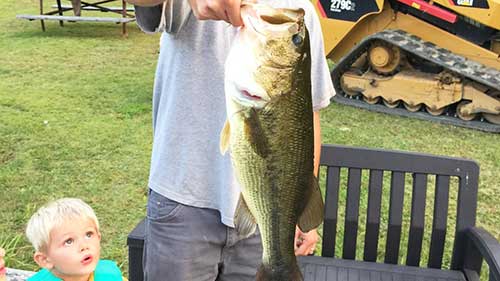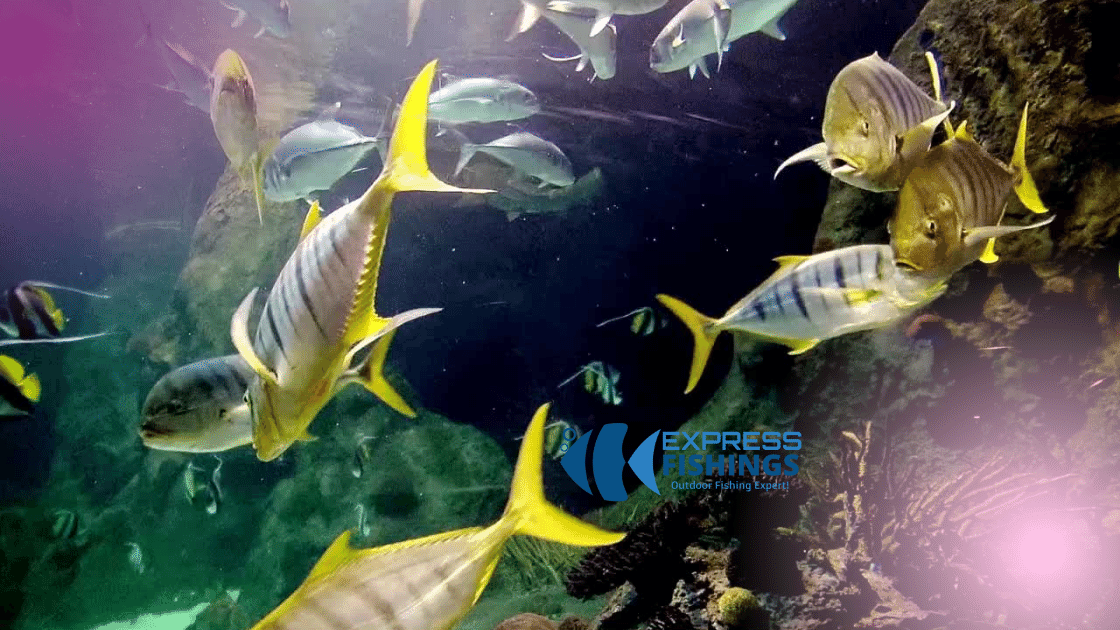Bass fishing is a popular sport in many parts of the world, and it’s not difficult to see why. The sport offers anglers a chance to spend some time outdoors fishing in clean, cool water, and Bass are some of the most common game fish in North America. In this article, we’ll offer you some tips on how to catch Bass in the fall season.
Fall is the optimum time to fish for bass because the water temperature is cooler and the bass are feeding more.
There are a few things to keep in mind when fishing for bass during the fall:
- Use a jig and bait that are effective in cooler water, such as worms or corn. Bass will often feed on these cold-water baits.
- Cast your line into cool, clear water where you think the bass are hiding. A little sunlight reflecting off the surface of the water will help you find them.
- Be patient – bass can be difficult to catch in the fall, but with a little perseverance, you’re sure to reel in a good one!
Bass feed on worms, krill, insect larvae, and small fish.
Fall bass fishing can be a great time to target smaller fish like worms, krill, and insect larvae. Bass feed primarily on these small prey items, so luring them in with a variety of baits is the key to success. Try using worms, crawlers, or shrimp on a jigging rod or casting spoons on a light line. When targeting smaller fish, stay close to the bottom and cast slowly near Structure such as overhangs and log piles. Fall fishing can be a lot of fun, so get out there and give it a try!
Try fishing around structure such as rocks and trees where the bass can hold onto and ambush prey.
In addition, bass can be caught on worms, jigs, and spinnerbaits in the water column. Bass will also eat insects such as beetles and caddisflies while submerged.
Finally, always remember to use proper safety equipment when fishing, including a good rod, reel, and line.
Use a jig or soft bait to attract the bass to your location and cast slowly into deep water.
In late summer and fall, bass are more likely to be in water less than 12 feet deep. Bass will become active in water 8 to 12 feet deep during the hot weather months of July and August.
When targeting largemouth or smallmouth bass, use a jig with a floating or sinking bait. When fishing for striped bass, use live or cut bait.
To maximize your catch, make sure to use quality gear and practice safe angling techniques.
Wait for the bass to bite before reeling in your prize
In the fall, bass are more likely to take bait on the bottom. So before reeling in your prize, make sure the bass are biting on the bottom. Check out our blog for more tips!
Is Fall a good time to bass fish?
Yes, Fall is a great time to bass fish. Bass are typically more active in the fall and winter, when food sources are scarce. Bass can also be found in deeper water since they tend to stay closer to the bottom.
Prepare for a tough fight.
Fall bass fishing can be tough, but with a little preparation and knowledge, you can make it a successful experience. Here are some tips to help you get started:
- Dress for the weather. Bass are tougher in cold weather, so dress appropriately. Bring extra clothing if necessary and layer up when temperatures drop.
- Choose your spot wisely. Bass are opportunistic feeders, so look for spots where they will likely be feeding. Try areas with cover like tall grass or trees, or places with good current.
- Get to know the fish. Fall bass are more aggressive than summer bass, so take the time to learn their habits and patterns. Study charts, check out fish identification forums online, or ask local experts for tips.
- Use bait effectively. Fall bass prefer earthworms, crickets, grubs, and other small baitfish species that swim near the bottom of the water column. Use small baits and spoons to target these areas.
What does Bass do during the Fall Transition?
During the Fall Transition, Bass will be looking for food. Some of the things Bass will eat include worms, insects, and crustaceans. Bass will also be looking for spawning areas and may be feeding on minnows or other small fish.
How deep can bass go in the fall?
Bass fishing in the fall can be a lot of fun. Bass can go deep, but there are some tips that will help you find them. Keep an eye out for structure, like fallen trees, and you should be fine.
What does the Fall bring to Bass?
The Fall brings a host of bass fishing opportunities. The cooler weather and changing colors provide Bass with a great opportunity to feed in preparation for the winter. Here are some tips on how to get the most out of your Fall bass fishing expedition:
- Focus on Structure: Bass love structure, so focus your efforts on finding good spots to fish around brush piles, fallen trees, bridges and other man made or natural structures. These areas offer cover from the sun and can be hotspots for feeding activity.
- Use Slow-Motion Techniques: When targeting bass during the Fall, use slow-motion techniques to tempt them into striking at artificial lures such as spinnerbaits or worms. This will help you get a better understanding of where they are biting and give you more time to set the hook when you do get a bite.
- Get Out And Fish: The Fall is an excellent time to get out and fish. Chances are good that you will find plenty of hungry bass waiting for your offering in some great fishing spots. Be prepared for both warm water and cold water opportunities, so pack your tackle box with everything from jigs to crankbaits in case you catch anything!
What is the best bait and lure for bass fishing in the fall?
Bass fishing in the fall can be a challenging proposition, with cooler temperatures and shorter daylight hours making it harder to find biting fish. That said, there are still some effective baits and lures that you can use to get results.
One of the best baits to use in the fall is a crawfish bait. Crawfish are abundant in many water bodies during this time of year, making them a reliable source of food for bass. You can also try using worms or crayfish imitations as baits. Lures such as spoons, worms, or jigs can also be effective in the fall. When choosing a lure, make sure to choose one that will match the conditions in the river or lake you are fishing.
TOPWATER (BUZZBAIT / FROG).
Fall bass fishing can be a great time to get into bass fishing.
Here are some tips for getting started:
- Start by scouting areas that have been productive in the summer. Fall Bass Fishing Tips
- Use buzz baits and frogs during the early and mid-day hours when fish are feeding.
- Try hunting around structure such as docks, bridges, and large rocks in calm water.
- If you are targeting largemouths, try using a spinner or crankbait in deeper water near structure.
LIPPLES CRANKBAIT
- Lip Plies crankbaits can be fished slowly and steadily over a variety of cover in much the same way as traditional crankbaits. Just make sure to vary the speed and depth you work them so you don’t lose their attraction.
- When fishing lip plugs, a good trick is to shake your rod tip back and forth quickly while casting. This simulates the sound a fish would make if it were eating the bait. Doing this often will help to trigger strikes from bass that are feeding near the plug.
- Another great way to get more out of Lip Plies is by using a lure trailer. This allows you to move your baits around more easily and also helps keep them fresh for longer periods of time.
SPINNERBAIT
When it comes to fall bass fishing, there are a few things you should keep in mind. First and foremost, spinners are your best bet. They’re small and easy to handle, which means they’re great for catching small fish in tight spaces. And if you’re looking for an extra challenge this fall, consider fishing for largemouths with bait rigs. Largemouth bass love the smell of blood in the water, so setting up a rig with live bait can be a successful way to catch them.
PLASTIC WORMS
Fall bass fishing tips can be broken down into general categories like worms, crankbaits, and jigs. There are so many options out there for bass anglers to choose from that narrowing it down to just a few will make your fishing experience that much more enjoyable.
When looking for a worm, the most important thing to keep in mind is what kind of conditions you will be fishing in. Sandy or muddy waters will both work well with Carolina and brown worms, but you will want to use a different worm in clear water. Knowing which type of worm to use is only the beginning though; you also need to find the right size and color for the conditions you’re fishing in.
For crankbaits, the most popular option is a J-Bait style bait. These baits are very easy to cast and can cover a lot of water quickly. When choosing which J-Bait style bait to buy, make sure to find one that matches the conditions of the water you’re fishing in. For example, a jig designed for still water should not be used in a river with rapids.
JERKBAIT
The Best Tips for Fishing for Bass in Fall
So, you’re thinking about fishing for bass in the fall – great decision! Here are some tips to help you have a successful season:
- Start planning your trip early – the earlier you plan your trip, the more time you’ll have to fish and the better chance you have of finding good fishing conditions.
- Use a variety of baits – autumn is a great time to try different baits to find what’s working best for your location and fish species. Bass love soft plastic lures and worms, so experiment with different types and colors to find what captures their attention.
- Be patient – like most fish, bass can be hard to catch if you rush things. Take your time setting up a good rig, casting, and watching the results. You may be surprised at how well you do when you take things slow and enjoy the process!
Conclusion
Fall bass fishing can be a fun and exciting sport that anyone can enjoy.
Here are some tips on how to have the best time during the fall season:
- Make sure you have all of your equipment ready before heading out – this includes baits, lures, lines, and hooks.
- Stay calm and rested – chasing bass in the heat of the sun can really wear you down.
- Use artificials to attract bass into shallow water – these plugs will sink and look like baitfish swimmer swimming near it.






